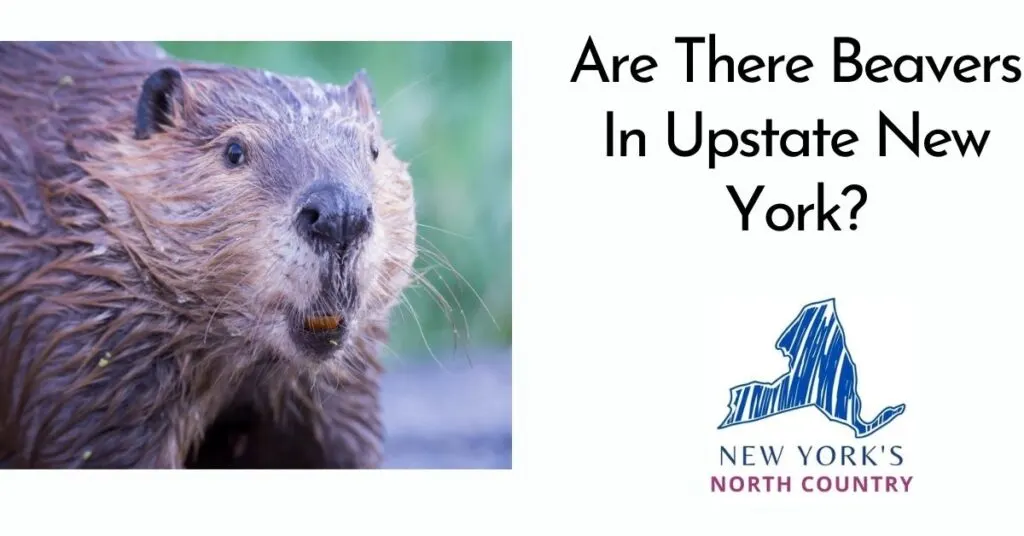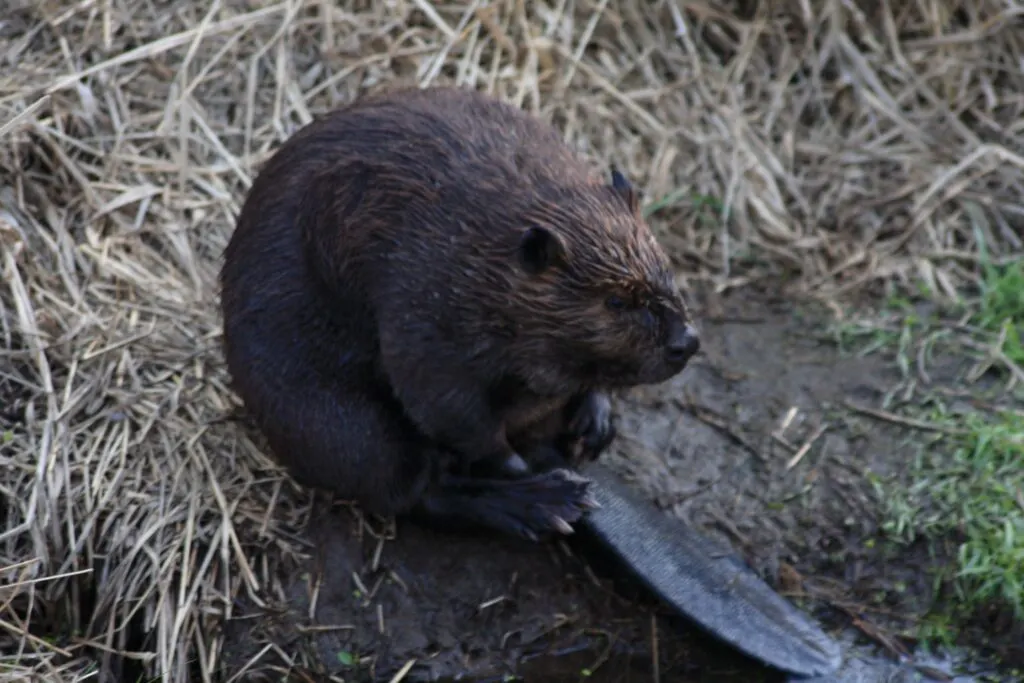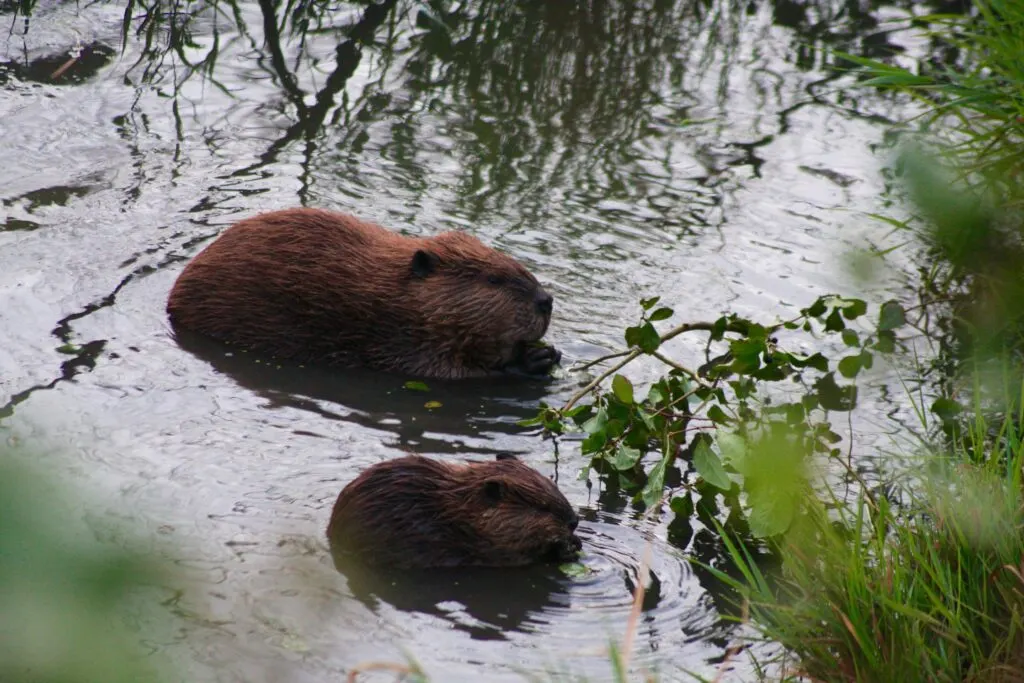Have you ever wondered if there are beavers in upstate New York? In this post, learn the answer, as well as where you might be able to spot this iconic, adorable rodent.

Beavers are a large, primarily nocturnal, rodent that is native to North America. They have captivated our imaginations because of their cute faces, orange teeth and their strange diet of wood.
Are beavers found in New York?
Yes, there are beavers all over New York. However, it has not always been easy to spot a beaver here, despite the beaver having been the official state animal of New York since 1975.
Prior to the arrival of European immigrants to North America, there were as many as hundreds of millions of beavers living a lovely existence as “nature’s ecosystem engineers”. They had historically performed the vital function of creating wetland areas, which include habitats for themselves as well as hundreds of other species of wildlife.
By the year 1800, beavers were gone from most of the eastern United States, including most of New York and, specially, all of New York City. Beavers were trapped extensively for their valuable fur and their numbers were further reduced due to habitat loss.
In early 1900s, the beaver population in New York was isolated to essentially only the Adirondack region and was estimated to be only about 50 individuals. In other words, beavers were a rare sight around the state.
Fortunately, beavers have been protected in most states and have made a pretty amazing recovery. There are now tens of thousands of beavers located in New York State, and they are now a pretty common sight in lakes and rivers around the region.
Beavers have even been able to make a comeback in New York City. In 2007, about 200 years after the last beaver was seen in NYC, a beaver was finally spotted in the Bronx River.
How many beavers live in New York?
The exact number of beavers in New York State is unknown, but the New York Department of Environmental Conversation estimates that as many as 75,000 beavers live in the Adirondack region of the state. This means that there could be as many as twice that many beavers in tot
While it might seem like beavers should be everywhere in New York with numbers like a possible 100,000 statewide, the population is still much smaller than it was prior to the year 1600. State experts estimate that there may have been as many as 60 million beavers in the state before widespread hunting, trapping, and habitat loss began with the arrival of Europeans to the region.

Beavers are a very important part of our ecosystem. Plus, they are pretty cute and exciting to see.
Hopefully, the population continues to increase and we, as humans, can develop ways to live in harmony alongside them.
Where to find beavers in New York?
The best place to find beavers in New York are the North Country region, which includes the Adirondack Park. Beavers love the marshy or swampy wetland areas that you might find right next to a lake, river, or stream.
As an example of how to spot a beaver, one of my favorite places to see beavers is near a lake named Butterfield Lake in Redwood, New York. There is a small stream that feeds into the lake, but it is very shallow and grassy in that area.
This is exactly the kind of place that beavers love, and you can often find lots of other cool animals in those places (like muskrats or even moose!). They can build their dams and find plenty of food in the small trees that try to grow in spots in the marshes, as well as on the shores of the lake.
I have seen beavers in almost ever river and lake that I have visited in the North Country, so you don’t need to make a special trip to any particular place. Just look for the types of places that beavers like to be.
You might also find them swimming across a narrow river, oftentimes swimming back and forth doing whatever beavers are always doing. While you can find a beaver anytime, they do tend to be easiest to find right before it starts getting dark.
Once you have found a good beaver habitat, it is important to watch quietly. Beavers do not like to be disturbed, so if you make a lot of noise, you are not likely to see one.
Beavers will usually be swimming in the water when you see them, and you can sometimes see their large “paddle” tail behind them in the water. They are bigger than otters, and usually don’t swim as “playfully” as otters do.
Beavers are just business when they are swimming back and forth.
Other times, you might find them very near the shore, usually partially in the water, nibbling on some dinner.
Are beavers dangerous?
Beavers are not typically aggressive if they are observed from a distance. However, beavers are large, territorial animals that can become dangerous if they feel threatened.
That’s why it is important to never approach a beaver and always watch from a safe distance away. It is key to make sure that the beaver, which has sharp teeth and can weigh more than 60 pounds, does not feel that your presence is threatening.
If the beaver that you are watching gives the water a slap, you will know that your presence has been noticed. Beavers will slap their tails on the water to warn you away from them and to let other beavers know that there is a potential danger.
My family spends lots of time outside fishing and recreating in various lakes and rivers around the North Country region of the state, and we have seen too many beavers to count, and have had few issues. One time, however, while we were looking under rocks for crayfish in the St. Lawrence River by a dock, a beaver actually swam under the dock to get close to us and splashed his tail within only 3-4 feet from us.
That was a definite sign that the beaver was concerned about our presence, and we knew that he must have felt threatened for him to get so close. So, we decided that we would look for crayfish somewhere else – no need to confront the beaver about who had more right to that spot of shore, we were content to cede the spot to him (or her?).
The photograph below shows an adult and juvenile beaver in a shallow part of a river. This particular pair of beavers were not photographed in New York, but they are the same species of beaver that lives all over North America.

Photo credit: USGS
Fortunately, there are many places where you can safely observe wildlife, including beavers, while still leaving them to go about their daily business without being bothered by their human admirers. Beavers are lots of fun to watch because they are always “busy” doing something.
The expression “busy as a beaver” is as true as they come!
Conclusion
I hope that this post has helped you learn all that you hoped to know about beavers in New York, including where to find them, the best time of day to spot them, and more.
If you have any questions or if you want to share a story about a time that you saw a beaver, I would love to hear from you in the comments.
Thanks for reading today!
